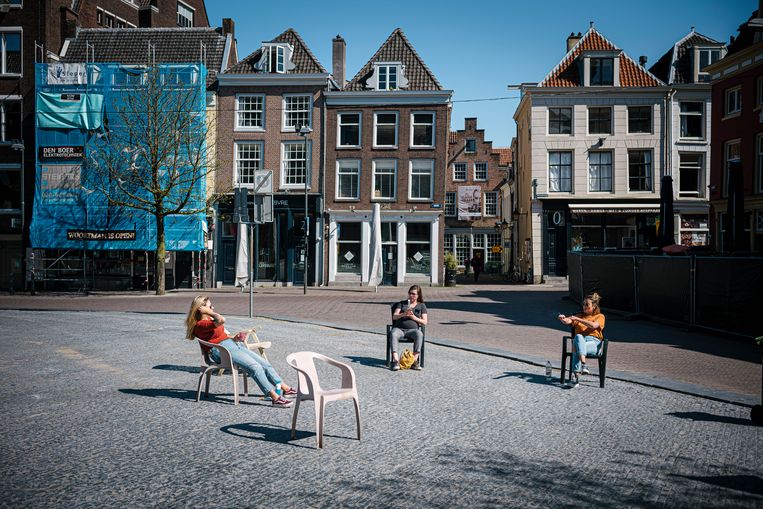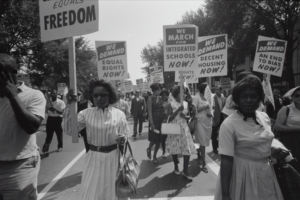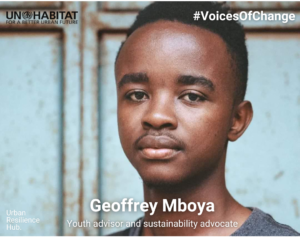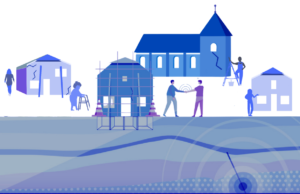The United Nations expects a staggering 60% of the world’s population to live in urban areas by 2030. Tourism constitutes much of the main economic, social and geographical pillars within many of these metropolitan areas across the globe (UNWTO). The lives of urban tourists and urban inhabitants are therefore inextricably intertwined – had it not been for the impact of COVID-19. Cities that had been suffering from overtourism before, suddenly turned eerily silent. But this quiet period also offered the opportunity to reflect: do we really want future tourists to roam around in our cities like they used to? And what role can tourism play in recovering from this crisis? How can we build back better and make urban tourism sustainable? The urban tourist already played an essential part in creating the design for urban policies (UNWTO). And in a post-covid world, it will continue to do so. But in what way? I believe metropolitan areas will be the breeding grounds for a post-covid type of urban tourism; one which is characterised by an intense use of new digital technologies, while it remains rooted in existing practices. This post-covid form of urban tourism can, in turn, profoundly influence the daily lives of urban inhabitants throughout the world. Its key ingredient? Digital mediation.
Digitally mediated movement
The post-covid urban tourist will most likely move around in a way that is more digitally mediated than before. Like many other businesses, tourism organisations needed to implement more digital tools to stay relevant during COVID-19 (Gursoy & Chi, 2020). The result is a surge of apps and other digital equivalents of existing practices that can live up to the new hygiene and physical social distance standards. Themed city walks, for example, have recently been popping up like daisies and are compelling examples of this new way urban tourists move around. In Rotterdam (The Netherlands), multiple ‘take away’ tours guide tourists and residents alike from one café to the next, and online street art tours take people to various parts of the city. The ‘traditional’ guided group tours seem to have disappeared from the streets since lockdowns limited the number of tourists. Instead, ‘bubble-proof tours’ using smartphone features are rising in popularity. The pandemic thus appears to have led to a rediscovery of walking. More precisely, to a type of walking that is extensively influenced by our smartphones.
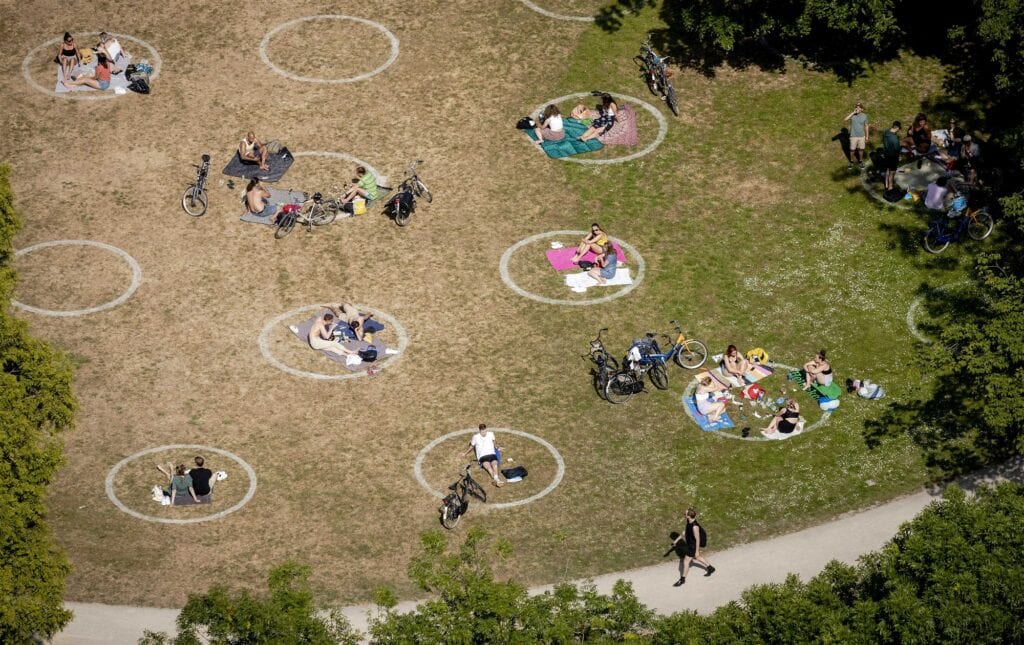
Rotterdam parks adjusted to social distancing © indebuurt.
The post-covid urban tourist is also likely to use digital city maps that guide them by GPS-enabled cues. The SmartGuide app is a striking example of that. This app uses GPS to track the user’s location and provides the right alerts at the right time, thereby making their tours quite similar to a ‘classic’ group tour. No waving tour guide flag is involved: these digital guides give their users more agency. If I, as a tourist, were to use such a guide, I could steer away from the designated route and return to it at any time I wish. I might choose to do it all in one go, or perhaps I might linger at a specific spot. Tourists’ movement through urban spaces, therefore, seems to have become more exploratory than before.
Actually, the underlying idea of ‘exploring’ every alley and getting a glimpse of everyday urban life has been present since pre-covid times already. This gradual development of tourism goes by the name ‘new urban tourism’ (Stors, Stoltenberg, Sommer et al., 2019). As the name suggests, this type of tourism is less concerned with exploring those places in the city which have often been catered to tourism. Instead, ‘new urban tourists’ actively search for experiences that take them out of their touristic bubble and allow them to explore everyday life in the city. This gradual development pairs up with COVID-19, especially because it is concerned with a re-enchantment of the banal. The new urban tourist is not excited by overcrowded places or touristic shows. Instead, they search for the quiet corner cafés, the parks where urban inhabitants walk their dogs, the local utility shops. New urban tourists hence aim to ‘live like a local’. And in fact, we can see this same re-enchantment happening in covid-tourism, where locals become tourists in their own areas due to travel restrictions. This changes the way tourists and locals interact within urban spaces, increasingly blending into a hybrid form in which both can be both.
Thinking cities are divided into either a ‘touristic’ heart and local areas is of the past. We are now seeing how every square can turn into a place to meet and enjoy sunny days, no matter its location. Digitally mediated movement of urban tourists can therefore result in a more active use of space within the city.
Digitally mediated regulation
Digital tools in post-covid tourism will surely help tourists in taking up a more active position than before. To avoid turning urban spaces into unregulated playgrounds, organisations involved with the regulation of urban spaces can use these same tools to (re)direct the movement of the urban tourist.
Reserving a spot to shop, eat, drink or visit has become more commonplace in the past year: an increasing number of organisations worldwide are actively implementing time ticketing systems. Tourists’ movement from one place to the other might therefore require more planning in advance. And even though they are more challenging to regulate than private areas, public spaces in urban areas have also become increasingly ‘ticketed’. In cities such as Rotterdam and Ghent, the municipality interfered in public spaces to ensure people followed social distancing guidelines. Those who wanted to spend time in parks did not have to reserve tickets – instead, they had to stick to pre-designated circles marked on the ground (see picture). This could help them to prevent the formation of large groups and ‘risky’ situations. The result: users of urban space appear to have ventured out to find new places to meet up. While walking around a Dutch or Belgian city right now, it is relatively easy to spot groups of people scattered around the city, enjoying the sunshine on non-conventional places such as small squares or simply alongside roads. Ticketing of public space can thus indeed be effective but can also spark new ways of utilisation.
So, what now?
We are now witnessing a gradual implementation of innovative solutions to soften the scars made by COVID-19. Now that the vaccinated population keeps growing and governments are lifting travel and social restrictions, urban tourism can slowly return. But digital technology will undoubtedly take up a more central role in this post-covid tourism and may very well be the solution to recover from the crisis and build back a better industry. A growing number of cities that had been suffering from tourism’s drawbacks were in search of other, more sustainable modi operandi. Redistributing tourists across the city is not just a policy that evolved out of this need: experiencing the ‘everyday’, ‘local’ urban life is also something that tourists actively pursue. digital mediation has changed, and is still changing, tourists’ engagement with the city. They can now interact more actively with both urban space as well as urban inhabitants. And ticketing systems, digital guides and other technological tools have extended the banality of regulated private and public urban spaces. Using these developments more intensively can help both tourists and cities build back better in a post-covid world – a world in which urban tourism is not a plague, but a promise for cities.

